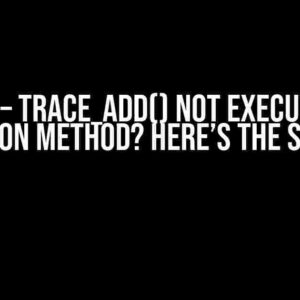Are you tired of manually entering input answers for your programs? Do you want to streamline your workflow and reduce errors? Look no further! Reading input answers from a text file is a game-changer for developers, and in this article, we’ll show you how to do it like a pro.
What is Reading Input Answer from Text File?
Reading input answers from a text file involves retrieving data from a file and using it as input for your program. This technique is commonly used in programming languages like Python, Java, and C++, where you can read data from a file and use it to answer questions, perform calculations, or execute tasks.
Why Use Reading Input Answer from Text File?
There are several benefits to using this technique:
- Efficiency**: Reading input answers from a text file saves time and effort, as you don’t need to manually enter data every time you run your program.
- Accuracy**: By using a text file, you reduce the risk of human error, ensuring that your input data is accurate and consistent.
- Flexibility**: You can easily update or modify your input data by editing the text file, without having to change your program’s code.
- Scalability**: This technique is ideal for large datasets, as you can easily swap out text files without modifying your program.
How to Read Input Answer from Text File
Now that we’ve covered the benefits, let’s dive into the nitty-gritty of reading input answers from a text file. We’ll provide examples in Python, but the concepts can be applied to other programming languages as well.
Step 1: Create a Text File
Create a text file using your favorite text editor, and save it with a `.txt` extension. For example, let’s create a file called `input_answers.txt`. Populate the file with your input answers, one per line:
Answer 1 Answer 2 Answer 3 ...
Step 2: Open the Text File in Your Program
In your Python program, use the `open()` function to open the text file. Specify the file mode as `r` for reading:
with open('input_answers.txt', 'r') as file:
# do something with the file
Step 3: Read the Text File Line by Line
Use a loop to read the text file line by line. You can use the `readline()` method or the `readlines()` method, depending on your preference:
with open('input_answers.txt', 'r') as file:
for line in file:
# do something with each line
print(line.strip())
Step 4: Process the Input Answers
Once you’ve read the input answers, you can process them as needed. You can store them in a list, use them in calculations, or perform other actions:
input_answers = []
with open('input_answers.txt', 'r') as file:
for line in file:
input_answers.append(line.strip())
print(input_answers) # Output: ['Answer 1', 'Answer 2', 'Answer 3', ...]
Tips and Variations
Here are some additional tips and variations to help you master reading input answers from text files:
Using CSV Files
Instead of using a plain text file, you can use a CSV (Comma Separated Values) file to store your input answers. CSV files are ideal for tabular data, and you can use the `csv` module in Python to read and write CSV files:
import csv
with open('input_answers.csv', 'r') as file:
reader = csv.reader(file)
for row in reader:
# do something with each row
print(row)
Handling Errors
When reading input answers from a text file, it’s essential to handle errors and exceptions. You can use try-except blocks to catch and handle errors:
try:
with open('input_answers.txt', 'r') as file:
# do something with the file
except FileNotFoundError:
print("Error: File not found!")
except Exception as e:
print("Error:", e)
Reading Input Answers from Multiple Files
What if you need to read input answers from multiple text files? You can use a loop to iterate over a list of file names:
file_names = ['input_answers1.txt', 'input_answers2.txt', 'input_answers3.txt']
for file_name in file_names:
with open(file_name, 'r') as file:
# do something with each file
print(file_name, ":", [line.strip() for line in file])
Common Use Cases
Reading input answers from text files has numerous applications in various domains:
- Automated Testing**: Use text files to store input answers for automated testing, making it easier to verify and validate your program’s output.
- Data Analysis**: Text files can store large datasets, which can be used for data analysis, machine learning, and data visualization.
- Gaming**: Reading input answers from text files can be used in game development to store level data, player information, or game configurations.
- Education**: Text files can be used to store quiz answers, exam questions, or other educational content.
Conclusion
Reading input answers from text files is a powerful technique that can simplify your workflow, reduce errors, and increase productivity. By following the steps and tips outlined in this article, you’ll be well on your way to mastering this essential skill. Remember to experiment with different programming languages, file formats, and use cases to unlock the full potential of reading input answers from text files.
| Keyword | Description |
|---|---|
| Reading input answer from text file | A technique used to retrieve data from a text file and use it as input for a program. |
By the end of this article, you should be able to:
- Create a text file to store input answers
- Open and read the text file in a Python program
- Process and use the input answers in your program
- Handle errors and exceptions when reading from text files
- Apply this technique to various use cases and domains
Happy coding, and remember to keep reading input answers from text files!
Frequently Asked Question
Get answers to the most frequently asked questions about reading input answers from a text file!
Q: What is the most common way to read input answers from a text file?
A: The most common way to read input answers from a text file is by using a programming language such as Python or Java, and its built-in functions like `open()` or `read()` to access and read the file contents.
Q: How do I specify the location of the text file in my code?
A: You can specify the location of the text file by providing the file path as a string argument to the `open()` function. For example, `open(‘C:/Users/Username/Documents/file.txt’, ‘r’)` would open the file `file.txt` located in the specified directory.
Q: Can I read multiple lines from the text file at once?
A: Yes, you can read multiple lines from the text file at once by using a loop to iterate over the file object, or by using the `readlines()` method which returns a list of all lines in the file.
Q: What if I want to read only specific lines or data from the text file?
A: You can use conditional statements or parsing techniques to extract specific data from the text file. For example, you can use regular expressions to match specific patterns in the file content.
Q: Are there any security concerns when reading input answers from a text file?
A: Yes, when reading input answers from a text file, you should be cautious of potential security risks such as file injection or data tampering. Make sure to validate and sanitize the file content before using it in your application.


